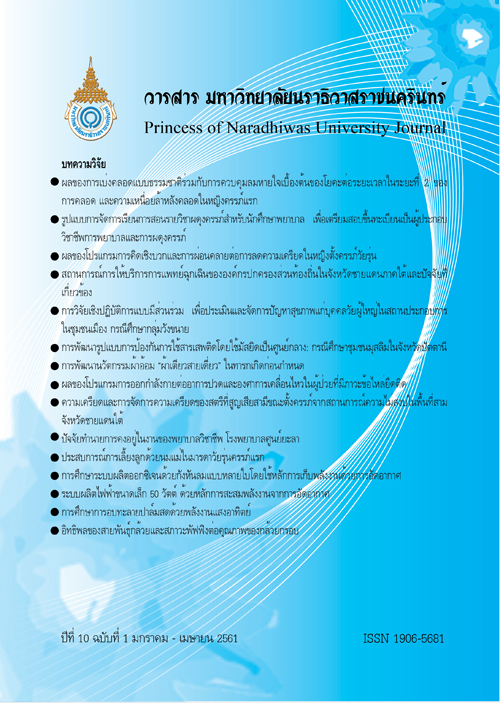Study of Bunch Fresh Palm Drying by Solar Energy
Keywords:
Fresh fruit bunch, Palm fruit, Green house solar dryerAbstract
This research investigated and designed a drying plant for bunch fresh palm using solar energy.
The dimension of the solar panel plant was 2 × 5.5 × 1 meter (wide x long x high) with curved roof sheet
and wall were made from polycarbonate sheet receiving the thermal radiation and occurring greenhouse
effect inside the pant. All side walls are made from polycarbonate sheets for insulation. A long side wall
was a door used to open and close and other three sides were sealed. The suction fans were installed at
the front and rear walls in order to remove the moisture to outward. To prevent floor of the factory damage,
a smart board with a thin aluminium was used to prevent moisture. The outside design of the plant is high
from ground around 0.5 meter.
The results of the experiment showed that the internal temperature of the plant was between 38
to 70 °C. The internal air humidity was between 36 to 46 %. Regarding the falling rate of fresh fruit bunch
during one to five days of drying of palm fruit in a solar-powered plant, the average falling rate was
around 20 to 26%. In addition, on day 6-7, the average fall of fresh fruit bunch was between 7 to 14%.Finally, the total oil content of the seven days was 187 to 260 ml per 1 kg palm fruit. However, the fatty
acid during day 1-2 increased free fatty acid, which was averaged between 10.39 to 10.51 wt.% and on day
3 to7 reduced between 1.35 to 2.97 wt%.
References
Banyat, N. (2011). Development of palm kernels sun drying system. The master’s thesis proposal of mechanical
enginerring. Prince of songkla university. pp. 133.
Department of Alternative Energy Development and Efficiency, Minitry of Energy. (2011). Solar energy.
Guide to development and investment in a renewable energy part II.
Janjai, S., Lamlert, N., Intawee, P., Mahayothee, B., Bala,. B.K., Nagle, M., Muller, J. (2009). Experimental
and simulated performance of a PV-ventilated solar greenhouse dryer for drying of peeled longan
and banana. Solar Energy, 83, 1550-1565.
Murugesan, A., Umarani, C., Subramanian, R. & Nedunchezhian, N. (2009). Bio-diesel as an alternative fuel
for diesel engines-A review. Renewable & Sustainable Energy Reviews, 13, 653-662.
Poonsuk P. & Suteera P., (1994). Analytical study of status and potential the used of wastes from palm oil
industrial. National center for genetic engineering and biotechnology. Department of science technology and environmental.
Ramadhas, A. S., Jayaraj, S. & Muraleedharan, C. (2004). Use of vegetable oils as I.C. engine fuels-A review.
Renewwable Energy, 29, 727-742.
Srivastava, A. & Prasad, R. (2000). Triglycerides-based diesel fuel. Renewable and Sustainable Energy Reviews,
4, 111-133.
Sodha, M.S., Bansal, N.K., Kumar, A., Bansal, P.K., & Malik, MAS. (1987). Solar Crop Drying 1. Boca Raton,
Florida: CRC Press.
Shahid, E.M. & Jamal, Y. (2007). A review of biodiesel as vehicular fuel. Renewable and Sustainable Energy
Reviews, 12, 2484-2494.




